About anti-submarine ships true and "imaginary". On the implementation of rocket firing an excellent ship and a hard-working ship.
This issue can be treated differently, but we will deal with the criterion of cost-effectiveness and continuity of the ship organization from project to project. Best start with the second. When the highest command of not only the Navy of the USSR but also the Ministry of Defense realized the seriousness of the missile underwater threat from the verdiggs, then almost all surface ships at once became anti-submarine. But to call the anti-submarine artillery-torpedo ship one, and to design and build a ship for the specific task of fighting submarines is another, and to educate crews in the anti-submarine spirit — the third.
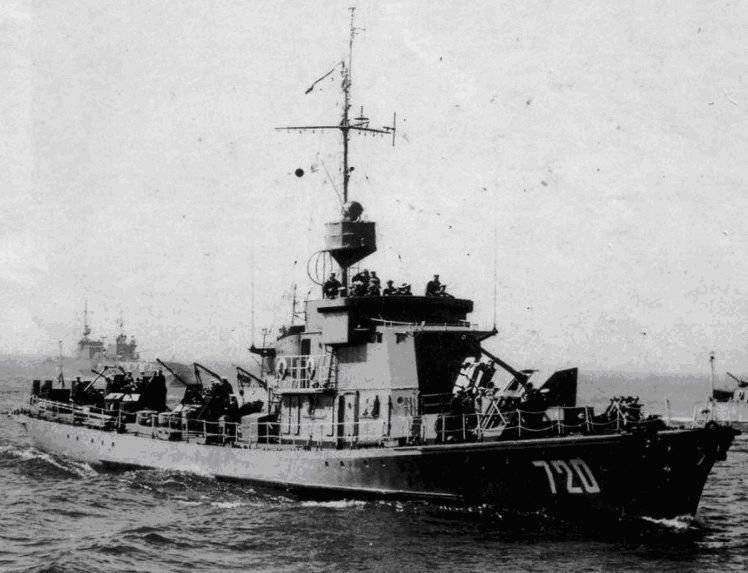
Etc. 122bis. Displacement: standard - 307 t, full - 325 t
Historically, from the experience of the past war, all the best from small and large submarine hunters has absorbed проект 122, but the tasks of the patrol ship hung over him. The merits of the border troops also fully appreciated the advantages of this project. Note that he kept his ancestry from boats (boatmen have always been distinguished by dashing and cavalry swoop, which in no way detracts from the merits of the heroes of the boats of the Great Patriotic War), this is essential for further reasoning.
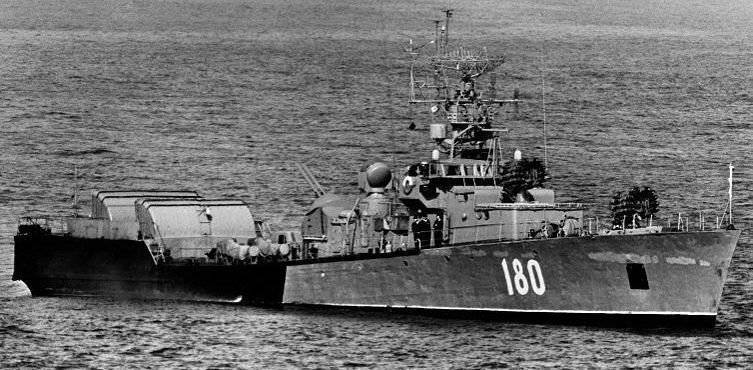
Small anti-submarine ship pr 204. Displacement: standard - 440 t, full - 555 t
In its pure form, anti-submarine was designed IPC Ave 204, and the crews on the lead ships of the project recruited 122 pr. from the IPC, together with the established traditions and attitude to the service. The self-awareness of the first crews of ships of new projects lagged behind the capabilities and power of the material part and again crawled into the “fine-cut” kater traditions — and without fighting they are not stable. The essence of them came down to the fact that let's face it - let's figure it out. But progress did not stand still, appeared Third generation IPC pr.1124.
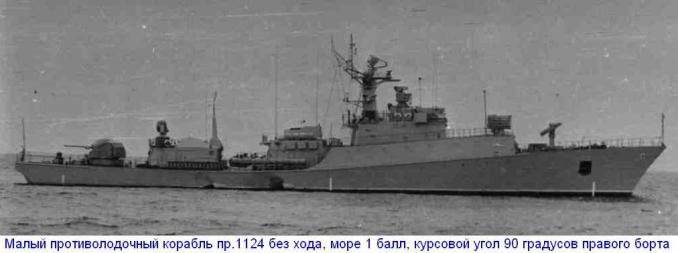
Displacement: standard 786 t, full 938 t
And again the first crews were formed from the crews of the previous project, the IPC 204 Ave. This is absolutely correct, but along with the personnel, the traditions of organizing the service from boats continued to creep along (this is a peculiar kind of culture, like in small peoples and ethnic groups that do not have written language, transmitted orally and by personal example, only on a smaller scale). By the way, if someone does not know, the ship differs from the boat in that it is impossible to execute the command on the ship: “Push the bow (or the stern)”. The mass of the corps is such that the muscular effort of the personnel is no longer enough. This is the case when, regardless of the crew, the quantity goes into quality. In general, from this side of the development of the PLO ships, the development of the organization of the service in the direction of improvement went on increasing and met with some misunderstanding of the process participants.
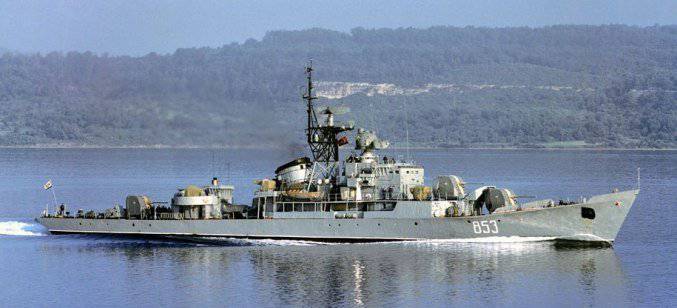
Patrol ship pr 50. Displacement: standard - 1068 t, full - 1200 t
Let's go on the other side. Crews patrol ships pr 50 (who called pocket cruisers for steam power GEM and 100 mm artillery of the main caliber) were recruited from the crews of destroyers of the destroyers, and there always pyzhilis on the cruising organization. At the beginning of the construction of truly antisubmarine 159 project ships, the crews for them were recruited from the patrol ships of the 50 project.
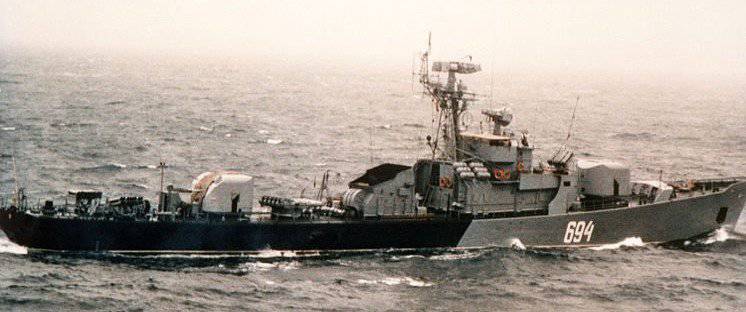
Patrol ship pr 159. Displacement: standard - 938 t, full - 1077 t
And the traditions continued to trickle down, but in this version in descending order. They had other difficulties - to bring the organization's “globality” in line with the reduced tonnage. The result was impressive: if almost the same anti-submarine ships of the TFR pr. 159 (159А) and MPK Ave 1124 (almost one tonnage ships and with almost the same number of crews, only with different anti-submarine capabilities) were encountered on the same berth, and the attitude of TFR crews to IPC crews was indulgently patronizing. Although objectively, one IPC of 1124 Ave., on search performance, cost the crews of the TFR of 159 Ave (159A).
Now about the cost - efficiency. There were other beautiful anti-submarine ships. For example: BOD pr.61 и 1135 Ave (1135A)who were subsequently modestly transferred to second-level patrol ships.
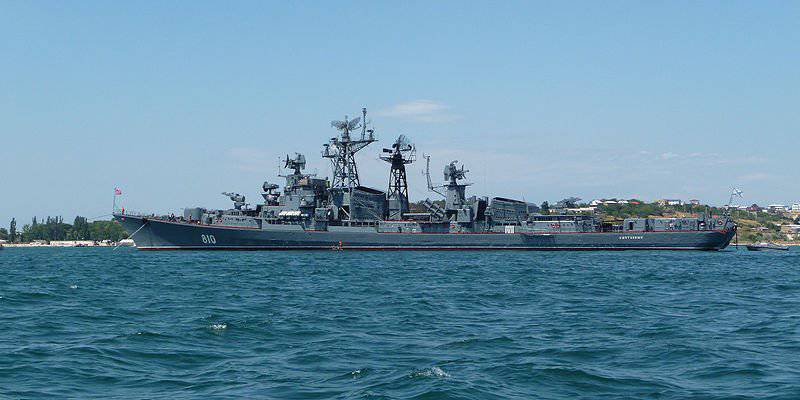
BOD / SCR pr 61. Displacement: standard - 3400 t, full - 4300 t
But the 61 project differed from the 159 (159А) project only by a large displacement, crew size, gas turbine engines voracity and high cost of maintenance. Armament and underwater acoustics were almost the same, the crew size was almost twice as high, rank two. Special pride - architecture and gas turbine power plant, it is really beautiful - “The Singing Frigate”. But it is impossible to fight submarines with melodies alone.
But 1135M, except for the undercutting GAS, already had a towed sonar station (BGAS) “Vega” MG-325, which combined the advantages of the subcutaneous and lowered GUS, because the BGAS antenna could be towed at a predetermined depth (within the TTD). True, the commanders of the ships did not like to use the BGAS because of the danger of losing the towed antenna.
So, it is not by chance that they were reclassified as sentry ones. They were practically not allowed to engage in anti-submarine training, but were kept in bases because of the high cost of operation. On fuel, which one ship with two gas-turbine powerplants spent for a daily exit to the sea, a KPUG consisting of three ships of the 1124 Ave could conduct a search for submarines for three days!
In general, everywhere and everywhere the attitude of the headquarters towards anti-submarine ships did not come from their tactical and technical data and the real contribution to the combat capabilities of diverse anti-submarine forces fleet, but from the displacement.
There is a case when in the summer of 1977, a detachment of three ships: KRU Ave 68U2 “Admiral Senyavin”, MPK-36 and MPK-143 (I was the last to command, but in essence it was my two ships) for three days ran at the speed of 24 node on the northern part of the Sea of Japan, denoting a detachment of the ships of the opposing party, to ensure the combat training of their submarines. And it was a bit annoying, after the end of the joint voyage, to receive from the cruiser our coordinates and the course to go to the base. At the “big brother”, they apparently did not know that the navigation systems and instruments were the same with them, the seaworthiness was not limited, and the experience of everyday navigation, perhaps, was more. And since I was not only serving on this control and communication miracle, but was also attached to the navigator combat unit, I knew the true capabilities of his navigation equipment, which was doubly insulting. At the IPC, only autonomy and displacement is less, and in general, just a week ago, we conducted a three-day follow-up IPL search in the same area to prepare the area for the exercises, in which they themselves took part. Successfully returned to the base without the help of the “big brother”.
On the performance of rocket firing an excellent ship and a ship-laborer
The first crew for the ship, pr.1124 in Kamchatka, was completed and sent for the newly-built ship in July 1977, when the Flotilla already had two ships of this project redeployed from Vladivostok. The command of the Kamchatka military flotilla immediately decided to make it an excellent ship. Specifically for guaranteeing the withdrawal of ships to excellent at the FAC, a methodology was developed for specifying the tasks to a sailor, foreman, squad, crew, officer, combat unit or service. In this method, the problem of bringing a ship to excellent was solved by reverse motion (by analogy with the solution of reverse astronomical tasks). That is, according to the methodology of assessing the General Staff of the Navy, in order for the ship to become excellent it is necessary that the 50% of combat units are excellent, the rest are no less than good. In an excellent warhead, too, not all teams should be excellent, but somewhere like that 60 percent, the rest are good. In an excellent team, too, not all departments should be excellent, but a little more than half. And, finally, in the excellent department, not all sailors should be excellent students of BP and PP, but a little more than half. And the specificity of the naval organization is such that the detachment could be from two sailors, the teams could also not be of the full complement. Of course, in no way should there be any negative evaluations. The sailor himself is also not on 100% excellent, but in some basic indicators, of which political training is of course in the first place. In order to facilitate the task for getting into excellent, not the largest and most laborious combat units were selected. Thus, if you correctly assess the ability of subordinates and formulate tasks in the form of social obligations, then with a high degree of probability, after six months of combat training, you can claim to be excellent (sailor, squad, crew, warhead and, finally, ship). Plus, the interest of the senior headquarters and, with some stretch, the ship becomes excellent.
The ship itself arrived at the permanent home base in the summer of 1978, and the procedure described above was carried out with it until the end of the year. Immediately after the arrival of the Kamchatka vehicle, in all things, in relation to the two previous ships and to the IPC-145 from the command side, she began to see through complete bias. In supply, in staffing, in the conditions of combat training, in carrying of combat duties on holidays. For example, if an ordinary ship (not an excellent student), for whatever reason, didn’t meet the 45 minutes when taking pictures from anchor and mooring on alert, the authorities would say that it had long doubted its combat readiness. And with an excellent student this simply should not be, especially on holidays, and that's nothing to create prerequisites for this, setting a great ship on combat duty for the period of these holidays.
In view of the complexity of creating a target environment for anti-aircraft missile firing, combat training planners tried to combine the firing of two or more ships. This is what happened with the IPC-143 and MPK-145 rocket and artillery firing. The shooting was planned for one day, it would seem that absolutely equal conditions were created for shooting, even the weather. But no. 143 received for firing two missiles, which ended a guaranteed shelf life, and 145 received missiles from the emergency reserve (NZ). How it is documented on the basis of the rocket weapons, and who gave orders for this replacement, let it remain on their conscience. A guarantee brigade from the manufacturer of the Osa-M air defense missile system could be distributed to the firing ships evenly, but the brigade was sent entirely to 145. The sequence of the execution of shooting in normal conditions determines the tactical number of the ship or the first letter of the ship’s name in alphabetical order, if not, any “other” considerations. The right of the first salvo was granted to 145 (apparently there were “other” considerations). Among other things, on board were specialists of two headquarters - the brigade and division, the chief of staff of the brigade was appointed the head of the shooting. At 143, there was only one person in addition to the regular crew - the head of the shooting, the brigade commander, captain 2 of the rank Golovko L.I. Prior to the time of our shooting, we were at the site of the closure of the area of rocket firing and in parallel were conducting final preparation for rocket firing.
During the “W – 2” (that is, two hours before the shooting), the commander of the warhead-2 senior lieutenant Sergey Nikolayevich Belyakov discovered a malfunction in the guidance system horizontally at the missile sighting station (SVR). The brigade commander took the malfunction report almost joyfully, with the words: “I had a premonition of it!” But his joy was premature, I was not going to refuse to perform rocket shooting. The fact is that when performing missile firing, the forecast of the flight of reconnaissance satellites of a potential enemy was necessarily taken into account and firing was carried out either before the satellite ascended or after its approach, and the prediction of passing the RISS was given only for three days. It is a pity, at that time I didn’t know that from 1978 to 1985, the CIA received everything that we had so carefully protected when we were firing missiles, from one of our agents in one of our research institutes. And if you do not shoot at the scheduled time, then it is unknown when this will be possible in the future. And there was weather, malfunctions, lack of support, and so on. Quite quickly, the cause of the malfunction was discovered: it was the feedback sensor in the horizontal guidance system of the missile sighting station (GNS). Exactly the same was quickly found in the onboard spare parts. The only question was that in order to change the gear from the faulty sensor to the healthy one, it was necessary to perform jewelry work - drill a hole in the axis of the healthy sensor (diameter of which is all 4 mm), the larger diameter of which was 1.5 mm, with tapering under the fixing pin in the conditions of rolling and shortage of tools (subsequently, the absence of holes in the axes of similar devices was submitted as a comment on the configuration of spare parts). The commander of the brigade, without pleasure, took control of the ship, at my request, chose a course with minimal rolling, and let me go from the bridge to make this hole in the axis of the tachometer. He could not have imagined that in twenty minutes the gear would be rearranged according to the full electromechanical classics and the hole in the axis would be not only the required diameter, but also a given taper. Installation of a serviceable element and approval of the tracking system took another twenty minutes. The commander of the warhead-2 reported on the readiness to fire. While we were fixing the malfunction, the MPK-145 performed rocket shooting, hit the target with the first missile at maximum range, which caused our joy for a comrade.
By itself, the organization of precisely these anti-aircraft missile firing was quite complex. Suffice it to mention that two TU-16 aircraft were supposed to create a jamming environment with the help of passive dipoles made of aluminum foil and, through this cloud, they attack two attack aircraft, mimicking the attack of a VTS of a possible enemy. TU-16 repeated jamming, the carrier of the target rocket through the clouds of interference allowed us to launch a rocket. I have already spoken about radio intelligence satellites.
And now, finally, the ship at the point of execution of the rocket firing, the long-awaited detection of an air target at the background of interference, the issuance and reception of the target control center. And then the rocket shooting song: “Rocket, Peleng ..., Distance ... - to accept target designation." “Targeting is taken: Peleng ..., Distance ..., I observe, I accompany. Target in the zone, Broach, Start the first, Retired, No capture (rocket something with a finished storage), Start the second, Retired, Capture, Drop first, Wide beam, Medium beam, Narrow beam, Meeting the second, Aim struck by the second rocket, ZAK “Welcome”. I am firing artillery. ” Howl (4000 shots per minute!) AK-630 and volleys (60 shots per minute) ZIF-72 confirm that the artillery is working on large fragments of a target destroyed by an air defense missile system.
But I told all this as the prelude of the forthcoming analysis of the RS. The ships returned from the sea, the analysis was scheduled two hours later, after the second ship was moored to the pier, at the brigade headquarters. As is customary, the first to report the navigator - they are fine, the shooting of the two ships are provided with the necessary accuracy of calculation and the safety of navigation. The second reported the artillery-rocket men about the ships in the order of shooting. Everything is excellent on the IPC-145, the rating is “excellent”! But the IPC-143 barely eliminated the malfunction, with great difficulty, and even then only the second rocket at the minimum allowable distance did fire (i.e., almost overshot), the rating is “satisfactory”. This is the case when, in an attempt to please the authorities, the objectivity of firing analysis is lost. But there was a truly competent and objective specialist - the flagship artillery-rocket pilot of the flotilla, the captain of the first rank. Who explained to everyone else (including the Flotilla Commander, who was present at the analysis) that, in accordance with the rules for assessing missile and artillery firing, the firing rate is equally high for both maximum and minimum firing ranges (both cases) weapons in extreme conditions). Moreover, the firing rate also rises for the ability of personnel to troubleshoot when they are at sea (unaided) arising during the preparation and execution of firing, and it’s not important what rocket the target was destroyed - they are fired at two at a time. On the contrary, on the IPC-145, the shooting was actually performed by the personnel of the guarantee group from the manufacturer of the air defense system. And asked to take into account his comments when making the final assessment. Considered: MPK-145 is “excellent”, MPK-143 is “good”. Well, as they say, thanks for the “objectivity”.
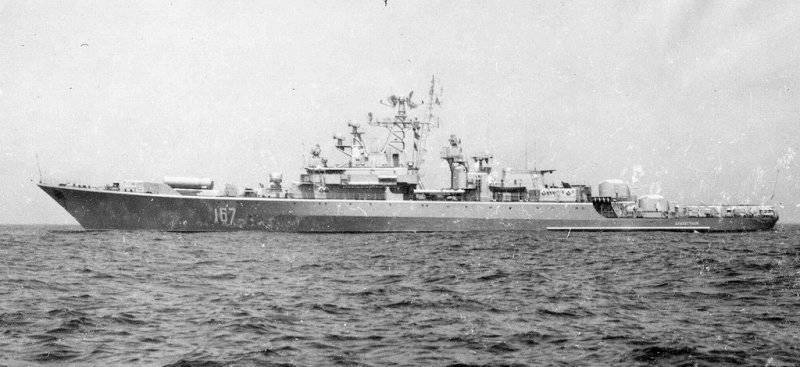
Information